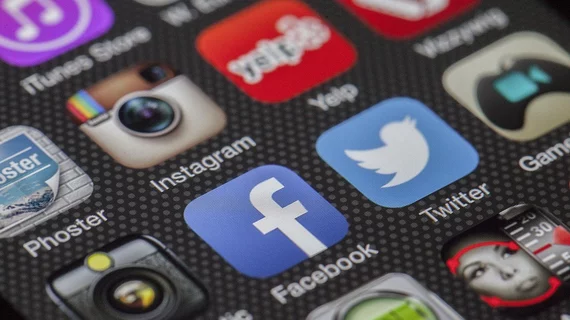The pandemic presented an unexpected yet fruitful opportunity for institutions to utilize social media in order to engage in meaningful medical discussions while also “building a brand” and increasing outreach efforts.
This was recently made evident in a paper published in the American Journal of Neuroradiology, where experts detailed a Twitter-based educational initiative that nearly doubled the social media impressions and engagement for the American Society of Head and Neck Radiology (ASHNR) during the peak of COVID.
But why exactly is social media engagement making an appearance within the text of medical journals? Corresponding author Nicholas Koontz, MD, of Indiana University School of Medicine and co-authors explained that it is because there is great value in the educational opportunities that large social media platforms present.
“These social media–based, free open-access medical education initiatives serve the purposes of carrying out societal education missions, increasing global outreach, engaging members, advertising the society, and increasing society membership,” the authors wrote.
The authors noted that, while prior studies have detailed the impact of social media on a departmental and staff level, there is a lack of information available on how effective the educational initiatives of professional radiologic societies conducted via social media are for increasing things like readership, membership and engagement.
To better understand this, the team took a closer look at an educational initiative conducted by ASHNR between 2018 and 2021, which leveraged the society’s twitter account to share weekly unknown cases—dubbed the American Society of Head and Neck Radiology Case of the Week (#ASHNRCOTW). The initiative was “gamified” by presenting cases that asked questions and providing viewers a way to answer them.
Over the three-year period, the team observed a significant difference in followers, mean engagements and impressions following the onset of the pandemic compared to the account’s pre-pandemic stats. Across all metrics, the increases were substantial, but in some cases, the figures nearly doubled.
The authors suggested that when the initial lockdowns took place globally, social media platforms like twitter were a valuable tool for medical professionals, as they “provided a forum for society members to continue to interact and network, benefitting from an international form of asynchronous interactive transmedia storytelling to continue educational efforts alongside virtual conferences and online webinars.”
They also indicated that ASHNR’s tactic of gamifying the initiative might have played a role in increasing engagement specifically.
Prior to the initiative, the authors noted, the society’s Twitter account was used primarily to provide updates to its current members, which limited their visibility. But the implementation of the #ASHNRCOTW has since greatly improved their outreach, mentoring efforts and international connections—all without incurring any additional costs.
The authors suggested that, as the world transitions into the post-COVID era, social media-based education will continue to benefit many radiology stakeholders.
To learn more, click here.

